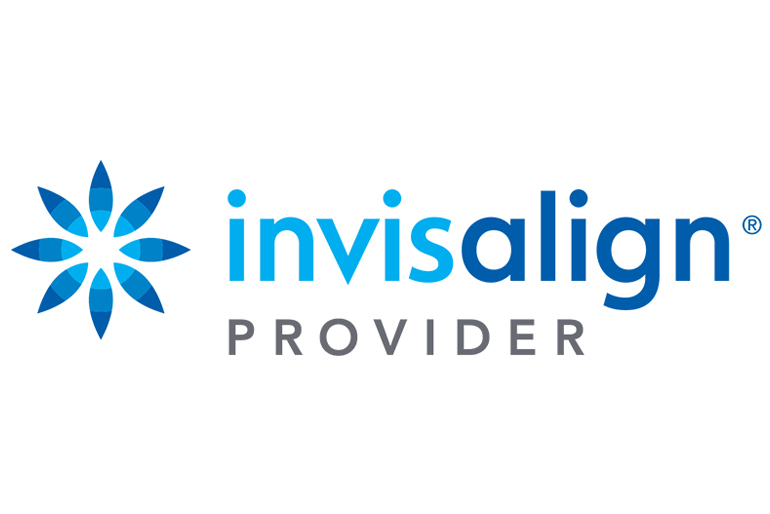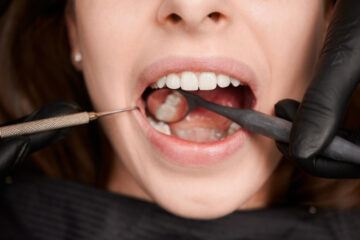
Introduction
Invisalign has revolutionized orthodontic treatment by offering a modern alternative to traditional metal braces. These clear, removable aligners straighten teeth discreetly and comfortably, making them a popular choice for adults and teenagers alike.
What is Invisalign?
Invisalign is a cutting-edge orthodontic system that uses a series of custom-made, transparent plastic aligners to gradually shift your teeth into their desired positions. Unlike conventional braces with metal brackets and wires, Invisalign aligners are virtually invisible and can be removed for eating and cleaning.
Why Choose Invisalign?
The appeal of Invisalign lies in its numerous advantages:
- Nearly invisible appearance
- Removable for meals and oral hygiene
- No dietary restrictions
- Comfortable with no sharp metal edges
- Fewer dental visits required
- Predictable results with 3D technology
This comprehensive guide will walk you through every step of the Invisalign treatment process, helping you understand what to expect from your initial consultation to wearing retainers after treatment.
Initial Consultation: The First Step
Your Invisalign journey begins with finding a qualified provider. Look for orthodontists or dentists certified in Invisalign treatment, as they have received specialized training in this system.
What Happens During Your First Visit?
During your initial consultation, your provider will:
- Examine your teeth, gums, and bite alignment
- Take photographs of your smile from multiple angles
- Discuss your concerns and aesthetic goals
- Evaluate whether Invisalign is suitable for your case
- Review treatment options and alternatives
- Provide a preliminary timeline estimate
Determining Candidacy
Invisalign can treat various orthodontic issues, including:
- Crowded teeth
- Gaps between teeth
- Overbite and underbite
- Crossbite
- Open bite
- Mild to moderate misalignment
However, severe cases may require traditional braces or surgical intervention. Your provider will honestly assess whether Invisalign is the right choice for you.
Cost Discussion
The consultation includes discussing:
- Total treatment cost
- Insurance coverage options
- Payment plans and financing
- Comparison with traditional braces pricing
Custom Treatment Planning: Designing Your Perfect Smile
Once you decide to proceed with Invisalign, the planning phase begins. This is where technology truly shines.
Digital Scanning
Your provider will use an iTero scanner or similar digital device to create a precise 3D model of your teeth. This process is:
- Quick and comfortable (takes about 5-10 minutes)
- More accurate than traditional impressions
- Gag-free, unlike putty molds
- Instantly viewable on screen
Creating Your Personalized Plan
Using specialized software called ClinCheck, your provider will:
- Map out the exact movements of each tooth
- Determine how many aligners you’ll need
- Calculate treatment duration
- Identify if attachments are necessary
- Plan the staging of tooth movements
Virtual Preview
One of the most exciting parts is seeing your future smile. The ClinCheck software creates a virtual animation showing how your teeth will move from their current position to the final result. You’ll see the transformation week by week, which helps you visualize the outcome and stay motivated throughout treatment.
Treatment Approval
You’ll have the opportunity to review the plan with your provider. If you have concerns about the projected outcome, adjustments can be made before manufacturing begins. This collaborative approach ensures you’re completely satisfied with the treatment plan.
Manufacturing Your Custom Aligners
After approving your treatment plan, the data is sent to Invisalign laboratories where your custom aligners are manufactured.
The Manufacturing Process
Invisalign uses advanced technology to create your aligners:
- 3D printing technology builds precise molds
- Medical-grade thermoplastic material is used
- Each aligner is trimmed to fit your gum line perfectly
- Rigorous quality control ensures accuracy
- Aligners are packaged in numbered sets
Timeline
Manufacturing typically takes 2-3 weeks. You’ll receive multiple sets of aligners at once, usually enough for several months of treatment. This reduces the frequency of dental visits.
Material Quality
Invisalign aligners are made from SmartTrack material, which is:
- BPA-free and safe
- Resistant to staining
- Flexible yet strong
- Comfortable against soft tissues
- Optically clear for invisibility
Starting Your Treatment: Day One
When your aligners arrive, you’ll return to your provider’s office to begin treatment.
Receiving Your Aligners
Your provider will:
- Show you how to properly insert and remove aligners
- Place attachments on your teeth if needed
- Provide care instructions
- Give you several sets of aligners to take home
- Schedule your first follow-up appointment
Understanding Attachments
Attachments are small, tooth-colored bumps bonded to specific teeth. They help aligners grip better and facilitate certain tooth movements. Not everyone needs them, but they’re common in Invisalign treatment.
Wearing Schedule
Success depends on compliance. You must wear your aligners:
- 20-22 hours per day
- Removing them only for eating, drinking (except water), and oral hygiene
- Switching to the next set every 1-2 weeks as directed
Initial Adjustment Period
The first few days with new aligners can feel strange:
- Slight lisp while speaking (improves within days)
- Pressure sensation (indicates aligners are working)
- Increased salivation initially
- Awareness of something in your mouth
These sensations are normal and temporary. Most people adapt within a week.
Care Instructions
Proper maintenance is essential:
- Rinse aligners when removing them
- Brush aligners gently with a soft toothbrush
- Use lukewarm water (never hot, as it can warp plastic)
- Clean teeth thoroughly before reinserting aligners
- Store aligners in their case when not wearing them
The Active Treatment Phase: Watching Progress Unfold
This is the longest phase of your Invisalign journey, typically lasting 6-18 months depending on your case complexity.
Aligner Progression
Each set of aligners makes small, calculated adjustments:
- You’ll wear each set for 1-2 weeks
- New aligners feel tight initially, then loosen as teeth move
- Progress photos help you see changes
- Treatment tracking apps can send reminders
Regular Check-ups
Unlike traditional braces requiring monthly adjustments, Invisalign patients visit their provider every 6-8 weeks. These appointments are quick and involve:
- Checking treatment progress
- Ensuring aligners fit properly
- Receiving your next sets of aligners
- Addressing any concerns
- Making minor adjustments if needed
Managing Discomfort
Some discomfort is expected, especially with new aligners:
- Pressure sensation for 2-3 days after switching aligners
- Mild soreness that indicates tooth movement
- Over-the-counter pain relievers can help
- Cold water can soothe irritation
- Orthodontic wax for attachment irritation
Maintaining Oral Hygiene
One advantage of Invisalign is easier oral care:
- Remove aligners to brush and floss normally
- Brush after every meal before reinserting aligners
- Floss daily without obstacles
- Consider carrying a travel toothbrush
- Use mouthwash for freshness
Lifestyle Adjustments
Living with Invisalign requires some adaptations:
- Plan meals and snacks strategically
- Remove aligners before eating or drinking anything except water
- Avoid staining beverages while wearing aligners
- Keep aligner case with you always
- Set phone reminders to wear aligners
Midway Adjustments: Staying on Track
During treatment, your provider monitors progress closely. Sometimes adjustments are needed.
Mid-Course Corrections
If teeth aren’t tracking as planned:
- New scans may be taken
- Refinement aligners are ordered
- Treatment plan is adjusted
- Additional time may be added
This is normal and ensures optimal results. Your provider’s goal is perfection, not speed.
Addressing Concerns
Common mid-treatment issues include:
- Aligners not fitting properly
- Lost or damaged aligners
- Attachments falling off
- Slower progress than expected
Always contact your provider if aligners don’t fit or you experience unusual problems. Never move to the next set if the current one doesn’t fit well.
Completing Active Treatment: Achieving Your Goal
When you reach your final aligner set, it’s time to evaluate results.
Final Assessment
Your provider will:
- Compare your smile to the original treatment plan
- Check bite alignment
- Assess overall satisfaction
- Determine if refinements are needed
Before and After Comparison
Seeing your transformation is incredibly rewarding. Compare photos from your first consultation to your final result. The difference is often dramatic, even if tooth movement felt gradual.
Refinement Aligners
Many patients receive additional refinement aligners to perfect their smile. This is included in most treatment plans and ensures you achieve the best possible outcome. Refinements typically involve:
- A few additional aligner sets
- Minor adjustments to tooth position
- Fine-tuning bite alignment
- Optimizing aesthetics
Retention Phase: Protecting Your Investment
After active treatment ends, retention begins. This phase is crucial for maintaining your new smile permanently.
Why Retainers Matter
Teeth naturally want to shift back to their original positions. Retainers prevent this relapse by:
- Holding teeth in their new positions
- Allowing bone and soft tissue to stabilize
- Protecting your investment in treatment
- Ensuring lifelong results
Vivera Retainers
Invisalign offers Vivera retainers, which are:
- Made from the same clear material as aligners
- 30% stronger than other clear retainers
- Custom-fitted to your final tooth positions
- Virtually invisible like aligners
- Comfortable for long-term wear
Wearing Schedule
Retainer wear follows a gradual reduction:
- First 3-6 months: Full-time wear (like aligners)
- After 6 months: Nighttime wear only
- Long-term: Several nights per week indefinitely
Your provider will give specific instructions based on your case.
Retainer Care
Maintain retainers similarly to aligners:
- Clean daily with gentle brush and soap
- Rinse thoroughly before wearing
- Store in a protective case
- Keep away from heat
- Replace as needed (typically every 1-2 years)
Tips for Success: Maximizing Your Results
Your commitment determines treatment success. Follow these tips for optimal outcomes:
Compliance is Everything
- Wear aligners 22 hours daily minimum
- Use a timer app to track wear time
- Don’t skip days or take extended breaks
- Follow your prescribed schedule strictly
Proper Maintenance
- Establish a cleaning routine
- Never eat or drink with aligners in (except water)
- Avoid hot beverages that could warp aligners
- Use retainer cleaning products weekly
Dietary Considerations
- No food restrictions since aligners are removable
- Brush before reinserting aligners after meals
- Avoid sticky foods that complicate cleaning
- Stay hydrated with water throughout the day
Managing Special Occasions
- Weddings, photos, interviews: Aligners are clear enough to wear
- Extended meals: Try to limit removal time
- Alcohol consumption: Remove aligners to avoid staining
- Travel: Bring extra aligners and cleaning supplies
Using Technology
- Download the My Invisalign app
- Set reminders for aligner changes
- Track your progress with photos
- Access virtual care features
Staying Motivated
- Take weekly progress photos
- Join online Invisalign communities
- Visualize your final smile
- Remember why you started treatment
Conclusion
The Invisalign treatment process is a journey that transforms not just your smile, but your confidence. From your initial consultation through the retention phase, each step brings you closer to the smile you’ve always wanted.
Understanding the process helps you prepare mentally and practically for treatment. With proper compliance, good oral hygiene, and regular provider communication, you’ll achieve beautiful, lasting results.
Remember, successful Invisalign treatment requires partnership between you and your provider. Your dedication to wearing aligners as prescribed directly impacts your outcome and timeline.
If you’re considering Invisalign, now is the time to take that first step. Schedule a consultation with a qualified Invisalign provider in your area to discover if this innovative treatment is right for you. Your perfect smile awaits.
Frequently Asked Questions
1. How long does treatment take?
Most cases require 12-18 months, though simple cases may finish in 6 months while complex cases could take 24 months.
2. Does Invisalign hurt?
There’s pressure and mild discomfort with new aligners, but it’s generally less painful than traditional braces. The discomfort indicates treatment is working.
3. Will I have a lisp?
Many people experience a slight lisp initially, but it typically resolves within days as you adapt to speaking with aligners.
4. Can I eat anything?
Yes! Since aligners are removable, there are no food restrictions. Just remove them before eating and brush before putting them back in.
5. What if I lose an aligner?
Contact your provider immediately. They may advise wearing your previous set, moving to the next set, or ordering replacements depending on your situation.
6. How much does Invisalign cost?
Costs range from $3,000 to $8,000 depending on case complexity, location, and provider. Many insurance plans cover Invisalign similarly to traditional braces.
7. Can I drink coffee with my aligners in?
No, remove aligners for coffee as it can stain them and cause discoloration. Drink only water while wearing aligners.
8. How often do I need dental visits during treatment?
Typically every 6-8 weeks for progress checks, much less frequent than traditional braces appointments.
9. Are there age restrictions for Invisalign?
Invisalign works for teenagers and adults. Teen-specific versions exist with compliance indicators for younger patients.
10. What happens if I don't wear my aligners enough?
Insufficient wear time delays treatment and can cause aligners not to fit properly, requiring treatment restarts.
11. Can Invisalign fix severe bite problems?
Mild to moderate cases yes, but severe orthodontic issues may still require traditional braces or surgery.
12. Will my insurance cover Invisalign?
Many dental insurance plans cover Invisalign similarly to braces. Check your specific policy for orthodontic coverage.
13. Can I whiten my teeth during Invisalign treatment?
Consult your provider first. Some recommend waiting until after treatment, while others may approve using whitening gel in aligners.
14. Do celebrities really use Invisalign?
Yes, many celebrities and public figures choose Invisalign for its discreet appearance and flexibility.
15. How do I clean my aligners properly?
Brush gently with a soft toothbrush and mild soap or Invisalign cleaning crystals. Rinse thoroughly with lukewarm water.
16. What if my teeth aren't perfectly straight after treatment?
Most plans include refinements. Your provider will order additional aligners to perfect your results at no extra cost.




